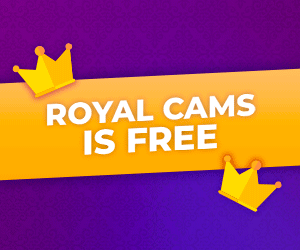The moment you realize your “quick survey” just disqualified you after eight minutes of answering personal questions is when most people abandon get-paid-to platforms forever. Having earned over $3,200 across both InboxDollars and Swagbucks while meticulously tracking time investments, I’ve uncovered the stark differences between these two giants that no one tells beginners. This isn’t about which site has more offers—it’s about which actually converts your time into real money without frustration.
InboxDollars operates like a straightforward cash register—every activity has a fixed price tag. Their paid emails (which actually pay $0.02-$0.05 just for opening) provide consistent micro-earnings while watching TV. The platform’s strength lies in receipt scanning—their Magic Receipts program pays significantly more than competitors for grocery purchases (I earned $12.80 in one month just uploading my normal shopping receipts). Their surveys, while still prone to disqualifications, at least attempt to estimate completion time accurately—a 15-minute survey usually takes 15 minutes, unlike the notorious “5-minute” surveys that actually take 25. The cash-out threshold starts at $30, which sounds high until you realize they give $5 just for signing up and confirming your email.
Swagbucks functions more like a rewards ecosystem where points (SB) translate to gift cards or PayPal cash. Their secret weapon is the Swagbucks Live trivia game—I’ve earned $25 in one evening during peak times, though most sessions net $1-$3. The platform shines for online shoppers—their cashback portal frequently offers 5-10% back at major retailers, plus bonus SB for completing certain purchase thresholds. Unlike InboxDollars’ rigid structure, Swagbucks allows more flexibility in how you earn, whether through mobile games, web searches, or watching sponsored videos. The minimum redemption is just $3 for certain gift cards, making it easier to see quick returns on effort.
Survey experiences diverge dramatically between the platforms. InboxDollars routes you through their proprietary survey router that remembers your demographics—after initial profiling, I get disqualified within 30 seconds rather than wasting 10 minutes. Swagbucks aggregates third-party survey providers, leading to more inconsistent experiences but occasionally higher payouts (a 300-SB survey about car buying habits took me 12 minutes and credited instantly). Both platforms suffer from the industry-wide bait-and-switch where longer surveys offer better pay rates until you get disqualified near the end—but InboxDollars at least shows the estimated pay per minute upfront.
Mobile earning potential separates these platforms significantly. Swagbucks’ apps (like SB Watch for video earnings) passively generate points while you sleep—I wake up to 30-50 SB most mornings just from letting cooking videos play on mute. InboxDollars’ mobile experience feels like an afterthought, with clunky interfaces for their games and video offerings. However, InboxDollars’ paid mobile games (earn $10 for reaching level 50 in Merge Dragons, for example) actually credit reliably if you follow their tracking instructions—something Swagbucks struggles with for similar offers.
Cashback shopping reveals another layer of differentiation. Swagbucks partners with more retailers (over 1,500 stores), but InboxDollars often has higher percentage returns for specific promotions. When buying new tires last month, InboxDollars offered 8% cashback at Tire Rack versus Swagbucks’ 5%. Both platforms exclude certain coupon codes from earning cashback—a painful lesson I learned after a $180 Walmart order failed to credit because I used a store pickup discount.
The referral programs tilt heavily in Swagbucks’ favor. Their “Swag Up” bonuses give you 10% of your referral’s earnings for life—my three active referrals net me an extra $8-$12 monthly without extra work. InboxDollars’ one-time $5 referral bonus feels paltry in comparison, though their $1 per referral contest periods can briefly make it more lucrative.
Payment processing times create make-or-break experiences. Swagbucks processes PayPal payments within 3-5 business days consistently, while InboxDollars takes the full 10 business days they advertise. Both platforms offer instant gift cards to major retailers, but Swagbucks’ selection includes niche options like Sephora and Home Chef that InboxDollars lacks. The $1 processing fee InboxDollars charges for PayPal under $15 feels punitive compared to Swagbucks’ fee-free $3 minimum.
Desktop versus mobile earning exposes another contrast. Swagbucks’ browser extension tracks shopping automatically (when enabled), while InboxDollars requires manual activation through their portal. However, InboxDollars’ desktop surveys tend to pay better—their $0.75-$1.50 surveys actually match the advertised time investments more accurately than their mobile counterparts.
The hidden gem in InboxDollars is their paid offers section. Completing a $1 trial for a meditation app earned me $12 in profit after immediate cancellation. Swagbucks has similar offers but often requires longer commitments before paying out. Both platforms’ offer walls suffer from misleading descriptions—I’ve learned to screenshot every offer’s terms before starting to dispute rejections.
Passive earning potential favors Swagbucks overall. Their Nielsen Computer & Mobile Panel (separate from the main platform) pays $50 annually just for running a data-collecting app in the background. InboxDollars’ “TV Coupons” program that pays for watching ads feels more intrusive for less return.
The loyalty programs add another dimension. Swagbucks’ monthly “Swagups” (bonus earnings) increase with your membership level—I now get 15% bonus SB on survey completions as a Ruby member. InboxDollars’ “Gold Status” (earned after $10 in lifetime earnings) only removes the PayPal fee and offers occasional bonus opportunities.
Both platforms share common frustrations—offers that don’t credit, surveys that close abruptly, and customer service that ranges from slow to unresponsive. The key difference lies in Swagbucks’ broader array of earning methods versus InboxDollars’ more predictable but limited options.
For pure cash earnings with less hassle, InboxDollars provides a more straightforward experience—you’ll always know exactly what each task pays. For gift card enthusiasts who enjoy variety, Swagbucks offers more flexibility and faster rewards. The smartest earners use both strategically—InboxDollars for receipt scanning and high-paying surveys, Swagbucks for shopping rewards and passive video earnings.
The ultimate metric isn’t which platform has more opportunities, but which fits your habits and goals. My spreadsheet shows I earn $1.87 per hour on InboxDollars versus $2.15 on Swagbucks—but your mileage will vary dramatically based on which features you actually use. Both beat minimum wage if you multitask effectively, but neither will replace a real job. As side hustles go, they’re among the most accessible ways to turn spare moments into tangible rewards—if you approach them with the right expectations.







